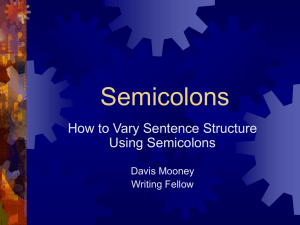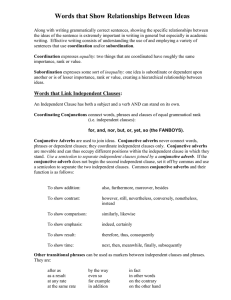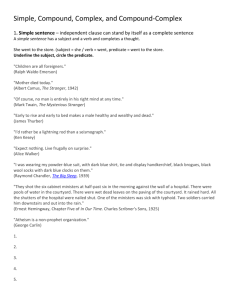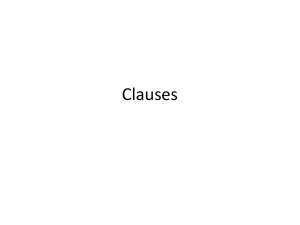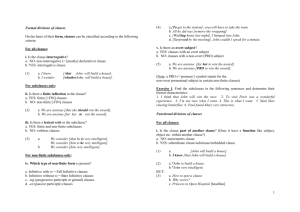Punctuation Handout - Humboldt State University
advertisement
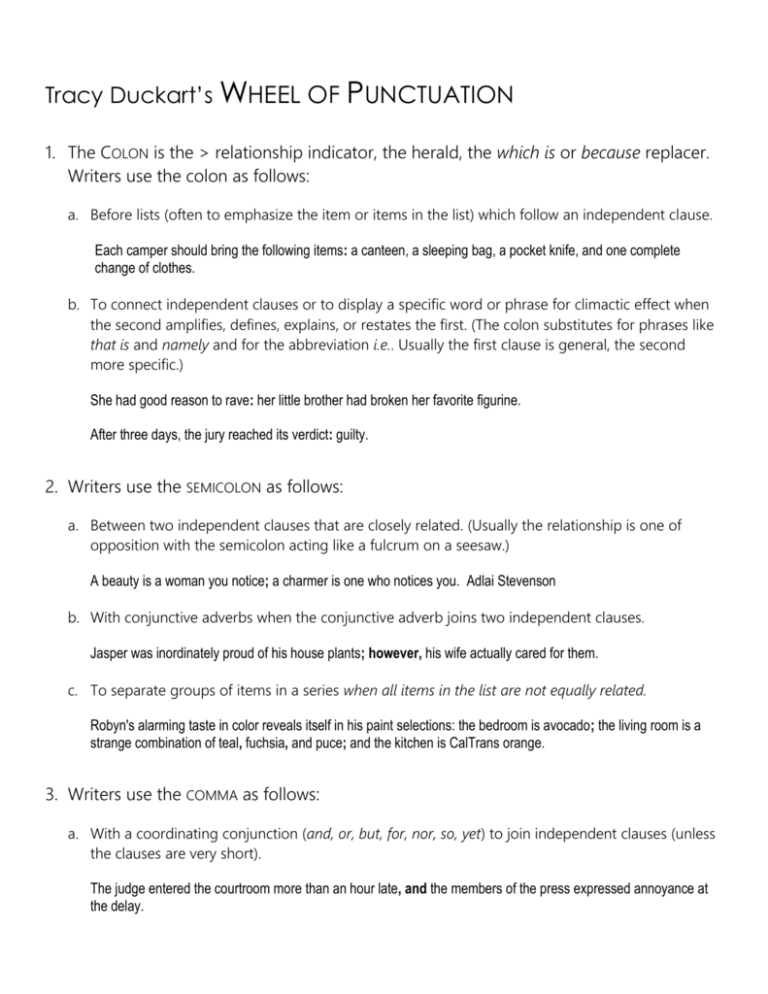
Tracy Duckart’s WHEEL OF PUNCTUATION 1. The COLON is the > relationship indicator, the herald, the which is or because replacer. Writers use the colon as follows: a. Before lists (often to emphasize the item or items in the list) which follow an independent clause. Each camper should bring the following items: a canteen, a sleeping bag, a pocket knife, and one complete change of clothes. b. To connect independent clauses or to display a specific word or phrase for climactic effect when the second amplifies, defines, explains, or restates the first. (The colon substitutes for phrases like that is and namely and for the abbreviation i.e.. Usually the first clause is general, the second more specific.) She had good reason to rave: her little brother had broken her favorite figurine. After three days, the jury reached its verdict: guilty. 2. Writers use the SEMICOLON as follows: a. Between two independent clauses that are closely related. (Usually the relationship is one of opposition with the semicolon acting like a fulcrum on a seesaw.) A beauty is a woman you notice; a charmer is one who notices you. Adlai Stevenson b. With conjunctive adverbs when the conjunctive adverb joins two independent clauses. Jasper was inordinately proud of his house plants; however, his wife actually cared for them. c. To separate groups of items in a series when all items in the list are not equally related. Robyn's alarming taste in color reveals itself in his paint selections: the bedroom is avocado; the living room is a strange combination of teal, fuchsia, and puce; and the kitchen is CalTrans orange. 3. Writers use the COMMA as follows: a. With a coordinating conjunction (and, or, but, for, nor, so, yet) to join independent clauses (unless the clauses are very short). The judge entered the courtroom more than an hour late, and the members of the press expressed annoyance at the delay. The subway had been operating for months, but Elsie had not yet learned how to use it. b. To set off items in a series of three or more. The big, red, hairy setter jumped through the glass pane. The weeds grew in the garden, on the lawn, and even in the woods. c. Used in pairs, like parentheses, to set off nonessential material embedded within a sentence. Non-restrictive Clauses or Phrases: (non-essential information) = use commas Jodi usually parked her car, with its fancy wheels and custom grill, near the library. Restrictive Clauses or Phrases: (essential information that restricts or limits or identifies the meaning of a word nearby) = no commas Colleges with more than 45,000 students are rare. d. Used to set off material at the beginning or at the end of a sentence. This "rule" is subject to editorial preference. In general, however, if the introductory words contain more than one preposition or if the lack of a pause following introductory words leads to confusion, or if the sentence begins with a dependent clause, use a comma. Defeated, the team shuffled sadly into the dressing room. In the middle of a dark and stormy night, Jack heard a scream. 4. The DASH is the interrupter. Writers use the dash as follows: a. To set off independent clauses inserted inside other independent clauses. Samuel Robert Williams—his friends call him Wizard—runs the most progressive newspaper in Wisconsin. b. To set off lists inserted in independent clauses. Women tolerate qualities in a lover—moodiness, selfishness, unreliability, brutality—that they would never countenance in a husband. Susan Sontag c. When, after a list, a sentence starts again with a summarizing all, these, or those. The visual essay, the rhythmic album, the invitation to drop in on a casual conversation—these are the idiosyncratic traits by which television, as television, has come to be recognized. Walter Kerr d. To isolate a word or phrase for emphasis or for climactic or humorous effect. I could never learn to like her—except on a raft at sea with no other provisions in sight. Mark Twain e. When writing dialogue, to indicate a break in speech or thought. "How am I? I'm—uh—well—I guess I'll live." Clause: a group of closely related words containing a subject and a finite verb. Independent Clause: a clause that makes sense as a sentence in itself. Susan loves her English class. Dependent Clause: an independent clause plus a subordinating conjunction. although she is nervous about her first paper Conjunctive Adverbs: consequently, furthermore, however, moreover, nevertheless, otherwise, then, therefore, thus, furthermore, similarly, etc. Coordinating Conjunctions: for, and, nor, but, or, yet, so (remember "fanboys") Subordinating Conjunctions: after as, although, as if, as long as, because, before, even if, even though, if, if only, in order that, now that, once, provided, rather than, since, so that, than, that, though, 'till, unless, until, when, whenever, where, whereas, whether, while I gratefully acknowledge my debt to the following resources: Allison, Alexander W., et al, eds. Norton Anthology of Poetry. 3rd ed. NY: Norton, 1983. Elbow, Peter and Pat Belanoff. A Community of Writers: A Workshop Course in Writing. NY: McGraw-Hill, 1989. Gibaldi, Joseph and Walter S. Achtert, eds. MLA Handbook for Writers of Research Papers. 3rd ed. NY: MLA, 1988. Raymond, James C. Writing [Is an Unnatural Act]. NY: Harper & Row, 1980. Dr. John C. Schafer, Humboldt State University English Department, Arcata, CA.

